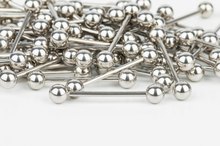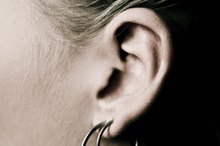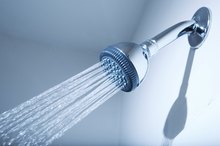What does fact checked mean?
At Healthfully, we strive to deliver objective content that is accurate and up-to-date. Our team periodically reviews articles in order to ensure content quality. The sources cited below consist of evidence from peer-reviewed journals, prominent medical organizations, academic associations, and government data.
- Journal of the American College of Surgeons: Risk Factors for Development and Recurrence of Primary Breast Abscesses.
- Journal of the American College of Surgeons: Risk Factors for Development and Recurrence of Primary Breast Abscesses.
- American Journal of Surgery: Surgical Management of Recurrent Subareolar Breast Abscesses: Mayo Clinic Experience.
- American Journal of Surgery: Surgical Management of Recurrent Subareolar Breast Abscesses: Mayo Clinic Experience.
The information contained on this site is for informational purposes only, and should not be used as a substitute for the advice of a professional health care provider. Please check with the appropriate physician regarding health questions and concerns. Although we strive to deliver accurate and up-to-date information, no guarantee to that effect is made.
What Is the Bump on My Nipple Piercing?
If you find a bump on your nipple piercing, this may be a sign that you have an abscess. A study published in the July 2010 edition of the "Journal of the American College of Surgeons" indicates that nipple piercing is one factor that puts you at risk for recurrent breast abscesses 12.** These painful bumps can occur years after you first have your nipples pierced.
Breast Abscesses
Body piercing may be en vogue, but women who have their nipples pierced put themselves at a higher risk for subareolar abscesses–tender, inflamed bumps that form under the areola of the nipple. According to an August 2010 report in "The New York Times," these painful, pus-filled lesions can form anywhere from a month to seven years after you get your nipple pierced. In some instances, these abscesses recur and require surgical management 4.
- Body piercing may be en vogue, but women who have their nipples pierced put themselves at a higher risk for subareolar abscesses–tender, inflamed bumps that form under the areola of the nipple.
- According to an August 2010 report in "The New York Times," these painful, pus-filled lesions can form anywhere from a month to seven years after you get your nipple pierced.
Study
Nipple Piercing & Hypertrophic Scars
Learn More
The "Journal of the American College of Surgeons" study conducted by the University of Iowa Carver College of Medicine looked at 68 women with breast abscesses 1.** According to the "New York Times" article, nipple piercing emerged as a risk factor for subareolar abscesses, with a 10- to 20-fold increase in abscesses noted from January 2004 to November 2009. The study concludes that recurrent abscesses "are associated with smoking, surgical management and increased age. 4"
Treatment
Recurrent subareolar abscesses in the breast aren't common, concludes an October 2006 article in the "American Journal of Surgery" submitted by the Mayo Clinic Department of Surgery, but when they do, they are difficult to manage medically 4.** In most cases, abscesses are treated with antibiotics or a surgical procedure that drains the abscess. However, because the problem that causes abscesses is never resolved, multiple surgical procedures are often necessary. The article concludes that multiple attempts at surgical management can "lead to scarring, distortion of the breast or nipple and lead to multiple scars, nipple and breast distortion ... or even to mastectomy."
- Recurrent subareolar abscesses in the breast aren't common, concludes an October 2006 article in the "American Journal of Surgery" submitted by the Mayo Clinic Department of Surgery, but when they do, they are difficult to manage medically 4.
- However, because the problem that causes abscesses is never resolved, multiple surgical procedures are often necessary.
Other Risk Factors
Vitamin E for Breast Pain
Learn More
Although nipple piercing is one factor associated with breast abscesses, the University of Iowa study found that smoking posed a more significant concern 2.** Researchers also determined that obesity and diabetes were other risk factors associated with breast abscesses.
What to Do
If you suspect you may have an abscess around your piercing site, don't self-treat. The Association of Professional Piercers states that you should see your treating physician if suspicious bumps and lumps on your nipple piercing last for a week or seem to be getting worse 3.** Also see your doctor if the piercing site is red, swollen and painful or if you notice foul-smelling discharge -- pus -- that's thick and green, yellow or gray.
Related Articles
References
- Journal of the American College of Surgeons: Risk Factors for Development and Recurrence of Primary Breast Abscesses.
- Science Daily: Smoking, Nipple Piercing Are Risk Factors for Developing Breast Abscesses, Study Finds
- Association of Professional Piercers: Body Piercing Troubleshooting
- American Journal of Surgery: Surgical Management of Recurrent Subareolar Breast Abscesses: Mayo Clinic Experience.
- Kasales CJ, Han B, Smith JS Jr, Chetlen AL, Kaneda HJ, Shereef S. Nonpuerperal mastitis and subareolar abscess of the breast. AJR Am J Roentgenol. 2014;202(2):W133-9. doi:10.2214/AJR.13.10551
- Toomey A. Abscess, breast. StatPearls. Updated January 11, 2019.
- Kazama T, Tabei I, Sekine C, et al. Subareolar breast abscess in male patients: a report of two patients with a literature review. Surgical Case Reports. 2017. 3(1):128. doi:10.1186/s40792-017-0402-3
- Lam E, Chan T, and Wiseman S. Breast Abscess: evidence-based management recommendations. Expert Review in Anti Infective Therapy. 2014. 12(7):753-62. doi:10.1586/14787210.2014.913982
- Irusen H, Rohwer A, Steyn D, and Young T. Treatments for Breast Abscesses in Breastfeeding Women. Cochrane Database of Systematic Reviews. 2015. (8):CD010490. doi:10.1002/14651858.CD010490.pub2
- Johnson SP, Kaoutzanis C, Schaub GA. Male Zuska's disease. BMJ Case Reports. 2014. 2014. pii: bcr2013201922. doi:10.1136/bcr-2013-201922
- Kazama T, Tabei I, Sekine C, et al. Subareolar breast abscess in male patients: a report of two patients with a literature review. Surgical Case Reports. 2017. 3(1):128. doi:10.1186/s40792-017-0402-3
- U.S. National Library of Medicine. MedlinePlus. Subareolar Abscess.
Writer Bio
Lisa Sefcik has been writing professionally since 1987. Her subject matter includes pet care, travel, consumer reviews, classical music and entertainment. She's worked as a policy analyst, news reporter and freelance writer/columnist for Cox Publications and numerous national print publications. Sefcik holds a paralegal certification as well as degrees in journalism and piano performance from the University of Texas at Austin.









